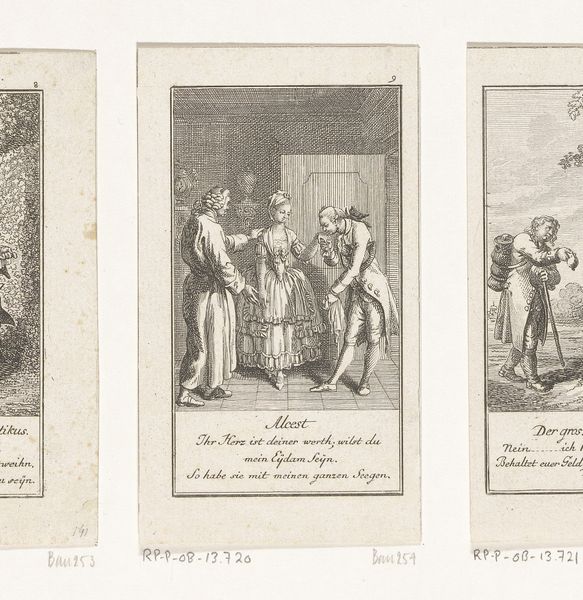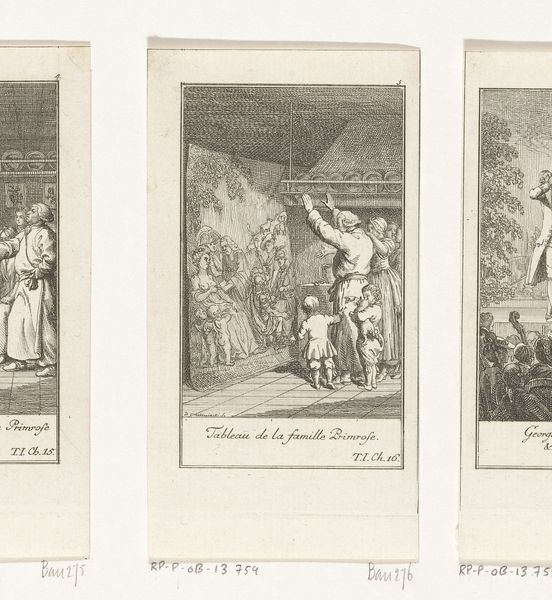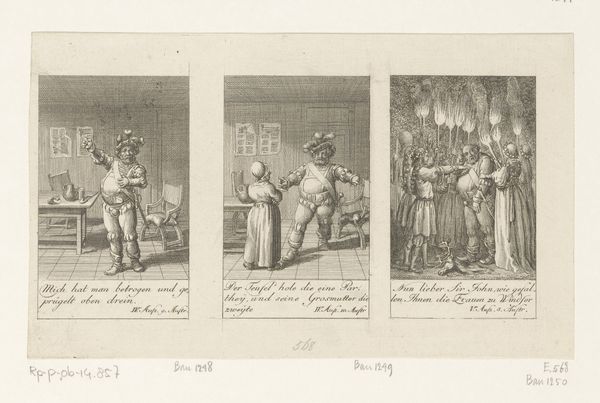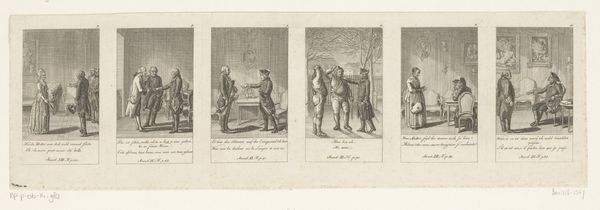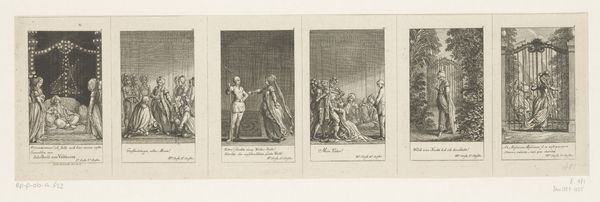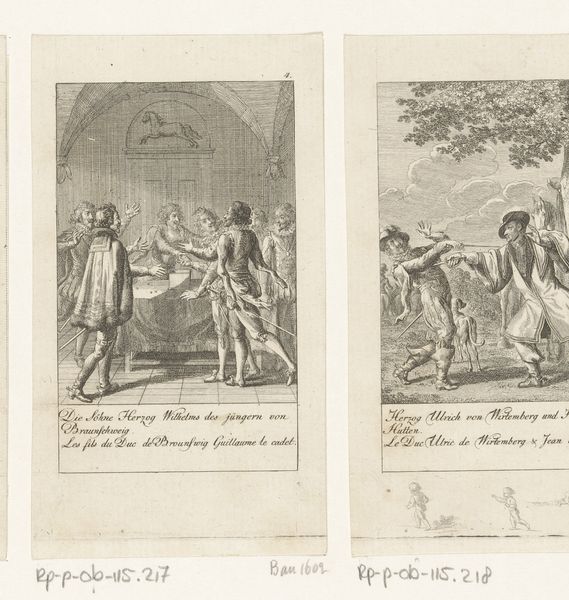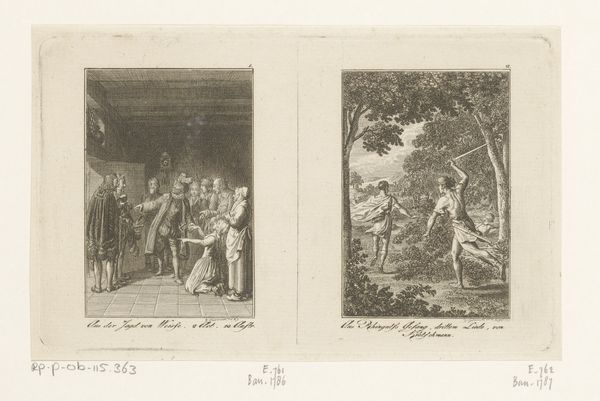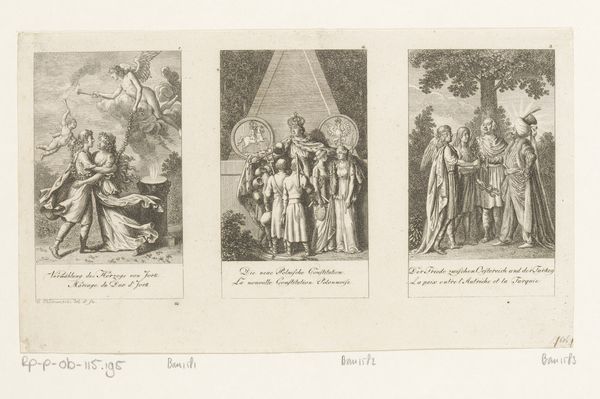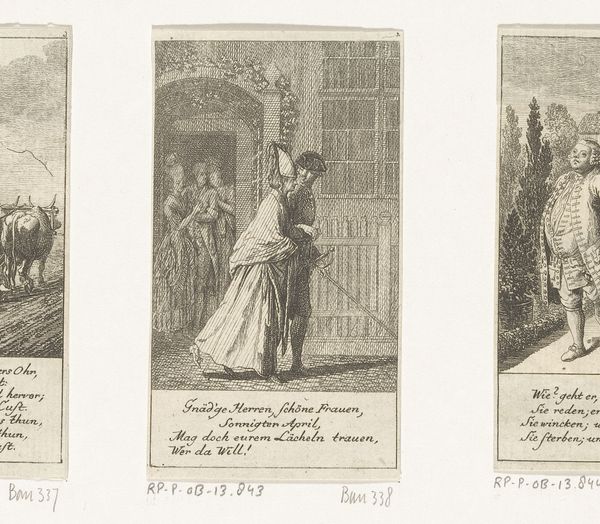
Drie voorstellingen uit William Shakespeares Merry Wives of Windsor 1786
0:00
0:00
Dimensions: height 111 mm, width 188 mm
Copyright: Rijks Museum: Open Domain
Curator: Today we’re looking at "Drie voorstellingen uit William Shakespeares Merry Wives of Windsor" which translates to "Three scenes from Shakespeare’s Merry Wives of Windsor." Daniel Nikolaus Chodowiecki created this engraving in 1786. It is currently held at the Rijksmuseum. What's your initial take? Editor: Well, the composition strikes me as a storyboard, like sequential frames from a theatrical performance. The figures are finely detailed, almost caricatures, yet the overall effect is light-hearted. There's an undeniable sense of satire, poking fun at class and gender roles in 18th-century society. Curator: Absolutely. Chodowiecki was incredibly popular for these kinds of narrative prints. It reflects a rising interest in the accessible interpretation of classic literature for a growing middle-class audience. Consider how theater was becoming more democratic, shifting away from strictly aristocratic patronage. Editor: Yes, and I wonder about the choice of “The Merry Wives of Windsor." Shakespeare's comedy already addresses themes of social climbing and gender dynamics, but through an 18th-century lens, Chodowiecki further emphasizes the power plays and follies embedded within those relationships. Notice the poses. Falstaff, particularly, seems designed for ridicule. Curator: Right. The poses, the settings – they contribute to the social commentary. The scene of Falstaff being caught is particularly revealing of anxieties surrounding male authority and female agency within marriage at the time. Think about how the rise of the bourgeoisie disrupted established hierarchies. Editor: And how the image circulates too! Printmaking made art much more accessible, didn't it? So Chodowiecki's work itself participates in that shift by enabling the spread of art that questions authority, social convention and offers a window onto very real struggles. Curator: Exactly. Chodowiecki was at the forefront of engaging a broader public with both art and ideas through relatively inexpensive means. Editor: Seeing it through this lens makes me think about contemporary issues surrounding accessibility and democratization. The work offers interesting commentary on that conversation. Curator: A pertinent observation, indeed. I’ve always found that the accessibility of his work invites us to consider what's changed, but more importantly, what hasn't. Editor: For me, that lies in the enduring appeal of challenging entrenched power structures, whether they appear on stage or in everyday life. Curator: Thank you, that was indeed an insightful reflection on a complicated etching. Editor: Indeed. Thank you.
Comments
No comments
Be the first to comment and join the conversation on the ultimate creative platform.
